ASUS USB-AC53 Dual-band Wireless-AC1200 Adapter Review
ASUS USB-AC53: Wireless-AC Speed Tests
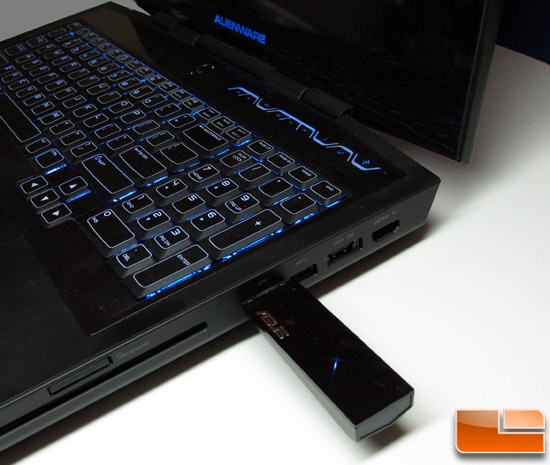
To test the throughput of the ASUS USB-AC53, we paired it with a Netgear R6300 Dual-Band 802.11ac wireless router that is our current Legit Reviews’ Editor’s Choice. We wanted to see a real-world application so we took our Alienware M17XR4 gaming laptop and installed the ASUS USB-AC53 to conduct our speed tests. The Alienware M17XR4 is already one of the best laptops on the market today in part because it features an Intel i7-3610QM CPU with 6GB RAM running Windows 7 64-Bit, and an NVIDIA GeForce GTX 660M. More importantly it is outfitted with a Qualcomm Antheros Killer Wireless-N 1103 Network Adapter already. The Killer 1103 is a three-antenna network adapter that connects at up to 450Mbps over 802.11n. We have written about the Killer NIC technology in recent years and there is no doubt that this 3-antenna solution will give us the best possible wireless-n throughput for our test.
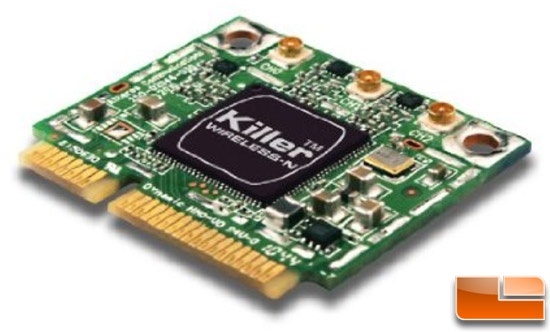
Using the ASUS 802.11ac adapter should give us a nice comparison to what a user can expect in terms of performance step up.
As we have with our other wireless networking tests, we took our Alienware laptop connected to the ASUS USB-AC53 Dual-Band Adapter and moved it 25-feet away from our Netgear R6300 802.11ac router. We didn’t tell the client anything more than the 5Ghz SSID name for the router and let it automatically choose the channel to connect to. For more of a comparison to everyday laptops, we took a Dell Latitude E6410 laptop with an Intel Centrino Advanced-N 6200 AGN Wireless Adaptor and tested it against our Killer NIC and ASUS USB-AC53. The Intel Centrino 6xxx series has been one of the most widely used mobile networking solutions ever.
We set the router to “Unsecure Mode” (for fastest data throughput), and with WMM / QoS turned ON. After connecting, we ran the PC application LAN Speed Test (LST) to measure file transfer and network speeds.
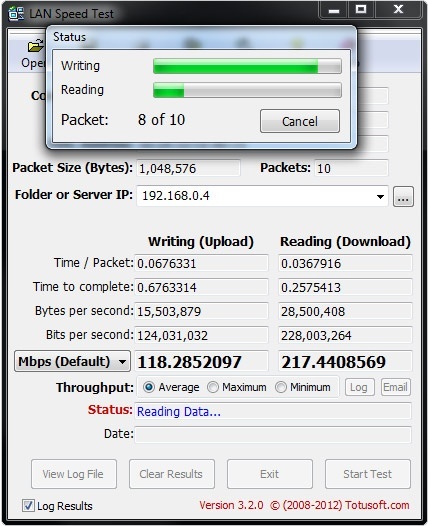
LST builds a file in memory and then transfers the packet without the effects of windows file caching. It then reports the time and calculates the network speed. We repeated the test 2 more times rotating the AC adapter 90 degrees after each test to make sure that the speed wasn’t affected adversely by its orientation.
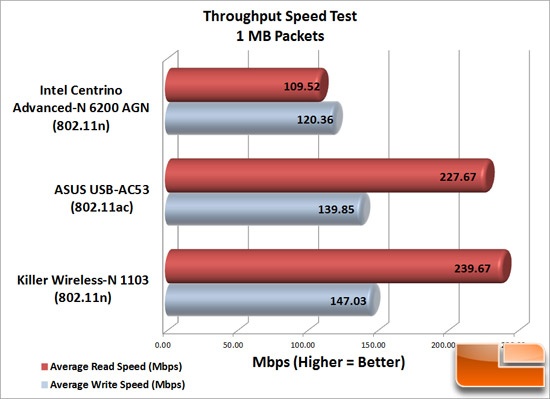
Benchmark Results: For our 1MB test, we used 45 packets of data to measure the throughput to get a more stable measurement. We see here that the ASUS USB-AC53 gives a 95% increase in Average Read Speeds over the Intel Centrino (N300) Wireless-N adapter which is fairly significant. On the other hand, the ASUS USB-AC53 is outperformed by the internal 3-antenna Killer Wireless-N 1103. The ASUS definitely has some speed behind it, but it seems that the 1MB packet size just doesn’t give the adapter room to stretch out. Of course, if you don’t have a 3-antenna wireless-n adapter in your laptop, you will only be able to achieve speeds about half those of the Killer 1103.
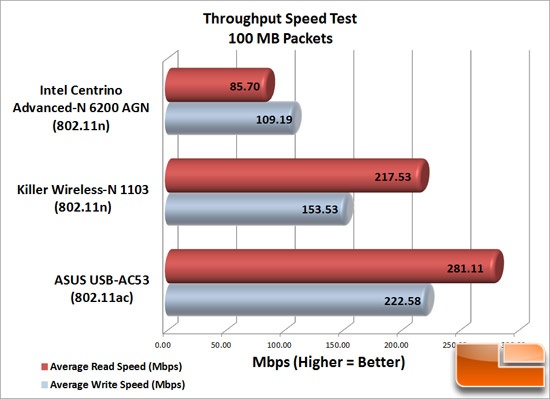
Benchmark Results: We use the 100MB packet size in our throughput tests because this data size simulates multimedia data better than that of smaller packets. We tested 10 packets per test here and found what we expected going into these speed measurement tests – namely, the ASUS USB-AC53 is outperforming the Wireless-N solution. The performance of the Intel Centrino 6200 AGN actually gets worse with the larger packet sizes. The ASUS USB-AC53 Wireless-AC improves more than 225% over that of the Centrino’s Wireless-N. You can clearly see why so many have been frustrated with viewing an HD video on your laptop equipped with an N300 wireless adapter. Both the Killer Wireless-N 1103 and ASUS USB-AC53 adapter turn in acceptable throughput numbers. With the ASUS’s Average Read Speeds of 281 Mbps, you can really turn your laptop into a device that can stream HD Movies to without fear of stuttering or pauses.

Comments are closed.